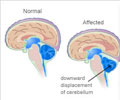- Cerebral Cavernous Malformations - (https://www.ncbi.nlm.nih.gov/books/NBK538144/)
- Management of cavernous hemangioma of the liver - (https://pubmed.ncbi.nlm.nih.gov/2712212/)
- Brain Cavernous Angiomas - (https://www.ncbi.nlm.nih.gov/books/NBK430871/)
- Cavernous hemangioma of the liver: factors affecting disease progression in general hepatology practice - (https://www.ncbi.nlm.nih.gov/pmc/articles/PMC3076672/)
- Cerebral Cavernous Malformation: What a Practicing Clinician Should Know - (https://pubmed.ncbi.nlm.nih.gov/32605781/)
- Management of cavernous hemangioma of the liver - (https://pubmed.ncbi.nlm.nih.gov/2712212/)
- Management of Cerebral Cavernous Malformations: From Diagnosis to Treatment - (https://www.ncbi.nlm.nih.gov/pmc/articles/PMC4300037/)
What is Cavernous Malformation?
A cavernous malformation, also known as a cavernous angioma, is a cluster of enlarged and irregular blood vessels (termed as ‘caverns’) that are filled with blood and lined with endothelium. These vessels are stretched out and have thin walls, which can cause them to rupture and bleed(1✔ ✔Trusted Source
Cerebral Cavernous Malformations
Go to source).
Cavernous malformations can occur anywhere in the body, but do not always pose a health risk. Cavernous malformations that form in the brain or spinal cord can create very serious health problems and can even be fatal. The clump of distended vessels gives the vascular malformation a distinct raspberry-like appearance.

What are the Causes of Cavernous Malformation?
There is no definitive cause for cavernous malformations, but genetic research indicates that mutations in certain genes result in this disease in several cases. In most cases, this condition is present from birth, but the malformations can develop during the course of an individual’s lifespan.
Sporadic cavernous malformations are not linked to genetics. They usually result in the formation of a single lesion while congenital or familial cases present multiple lesions with a correspondingly higher risk of complications.
The prevalence of cavernous malformations is estimated to be about 0.5 percent. The male-female ratio is approximately equal which means that both sexes have the same risk for cavernous malformations.
Patients of Hispanic descent are more likely to have familial rather than sporadic cavernous malformations and this can be traced to early Spanish settlers. A child has a 50 percent chance of getting cavernous malformation if either parent has this disease as it requires just one mutated copy of the disease gene for the disease to manifest. This is why families with this disease have several affected members in successive generations.
What are the Symptoms of Cavernous Malformation?
Most cases of cavernous malformation are asymptomatic which is why they go undiagnosed. People with sporadic malformations are less likely to experience symptoms as compared to those with familial malformations. Cavernous angioma symptoms are completely dependent on the location and size of the lesion.
Symptoms of Cavernous Malformation in the Brain
A cerebral cavernous malformation (CMM) is also known as a cerebral cavernous hemangioma. These malformations can be located in the brain or the spinal cord. Approximately, 25 percent of all people with cerebral cavernous malformation never have related health problems. Minor cerebral cavernous malformation symptoms include headaches, numbness in the limbs and problems with balance. Seizures and double vision are two of the most serious symptoms of this neurological disorder that suggest bleeding and require immediate medical attention(2✔ ✔Trusted Source
Brain Cavernous Angiomas
Go to source).

Symptoms of Cavernous Malformation in the Liver
A cavernous malformation in the liver is also known as a liver cavernous hemangioma or a hepatic hemangioma. This type of cavernous malformation is the most common form of benign liver tumors. Approximately, 40 percent of patients have multiple lesions on either lobe of the liver. Most cases of liver cavernoma are asymptomatic. Minor symptoms include lack of appetite, feeling satiated with very small meal portions, nausea and vomiting. Severe pain in the upper right abdomen is a more serious symptom as it could indicate a rupture(3✔ ✔Trusted Source
Cavernous hemangioma of the liver: factors affecting disease progression in general hepatology practice
Go to source).
Symptoms of Cavernous Malformation in the Eye
A cavernous malformation in the eye is also known as an eye cavernous hemangioma or an orbital cavernous hemangioma. It is more common in women between the ages of 20 and 40 years. If the optic nerve is compressed, the person may experience decreased vision or even double vision. In some cases, patients report exophthalmos, which is the bulging of the eye out of the orbit.
How to Treat Cavernous Malformation?
Cavernous malformation treatment varies greatly depending on the location and size of the tumor. The most common surgical procedures aim at removing the tumor completely or limiting the blood supply to it to reduce its size.
Treatment for Cavernous Malformation in the Brain
The prognosis and treatment of cavernous malformations in the brain varies from case to case depending on the location and number of lesions. The majority of lesions don’t hemorrhage and even the ones that do bleed, leak blood at a very slow rate. Symptoms such as seizures can be treated with antiepileptic medications but if the patient does not respond to the drugs, surgery may be necessary. The surgical removal of the lesion is carried out using microsurgical techniques if the lesion is in a surgically accessible location(4✔ ✔Trusted Source
Cerebral Cavernous Malformation: What a Practicing Clinician Should Know
Go to source).
Pontine cavernous malformations can be particularly dangerous as they are located in the pons, which is an area that is difficult to access surgically. Neurosurgeons generally tell their patients to wait for a few months after a mild bleed to give their body time to absorb the excess blood as this makes the boundaries of the lesion distinct and easier to extract.

Treatment for Cavernous Malformation in the Liver
Cavernous malformations in the liver generally occur as solitary lesions that can range from a few millimeters in size to as much as 20 centimeters. Most of these malformations are typically less than 4 centimeters and those that are over 5 centimeters are referred to as giant hemangiomas.
The two main methods of treatment for a liver cavernous malformation are hepatic artery ligation and arterial embolization. In a hepatic artery ligation procedure, the blood supply to the tumor is stopped by tying up the main artery while an arterial embolization uses a special glue or foam to block the blood flow to the malformation. Reducing the blood supply to the malformation causes it to shrink and reduce in size(5✔ ✔Trusted Source
Management of cavernous hemangioma of the liver
Go to source).
Treatment for Cavernous Malformation in the Eye
Treatment for a cavernous malformation in the eye is not required or recommended for asymptomatic cases. This is because the risks of a surgical procedure far outweigh the possible benefits. These malformations are usually slow-growing tumors and their growth is closely observed with periodic MRI imaging before deciding on the requirement and method of surgical intervention.
If there is evidence of growth or optic nerve compression, a lateral orbitotomy surgery will be necessary. The surgeon will identify and cauterize the blood vessels supplying the tumor and the tumor is then removed(6✔ ✔Trusted Source
Cerebral Cavernous Malformations
Go to source).
How to Prevent Cavernous Malformation?
There is no method to prevent cavernous malformations. Several ongoing research programs are studying the link between certain genes and the formation of cavernous malformations. The results of these studies will provide the foundation for gene therapy for cavernous malformations. Prenatal genetic testing may be suggested for those with a family history of malformations(7✔ ✔Trusted Source
Management of Cerebral Cavernous Malformations: From Diagnosis to Treatment
Go to source).

Health Tips
There is no known method of prevention, but prenatal genetic testing and counseling can help if there is any family history of the condition. In most cases however, the condition is only detected when bleeding occurs, which may even result in a stroke. The best thing you can do is seek emergency medical care if you notice any of the symptoms, as there is nothing that can be done at home.








